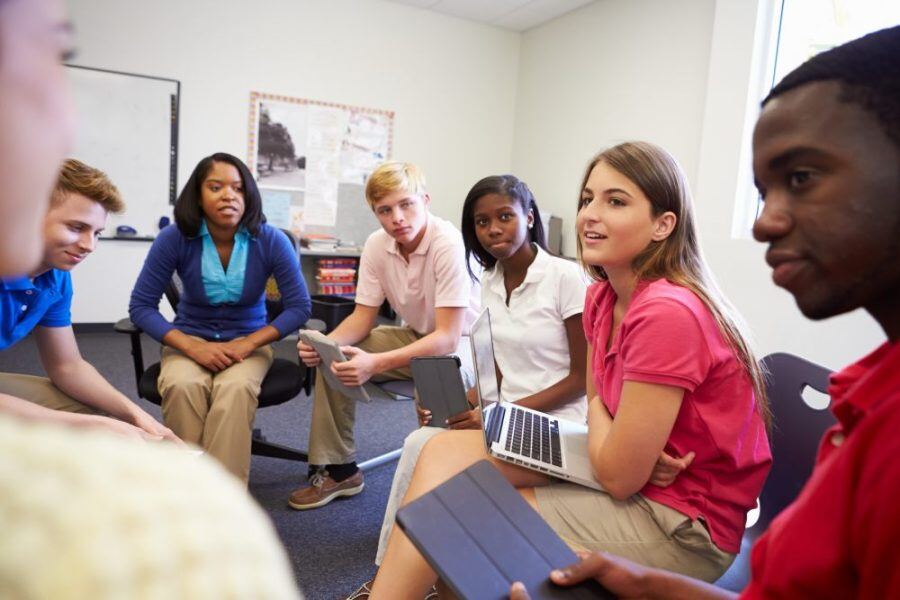6 Benefits of Using ASTROS Learning in The Classroom
A wireless presentation and collaboration system is a cutting-edge technological solution that enables multiple users to seamlessly share and...
3 min read
Frederic Nestler
:
7/3/24 12:00 AM

Astrogate is passionate about helping people envision and design education spaces that embrace the future. We believe that education is the key to unlocking human potential and fostering innovation. In the fast-paced digital era, technology plays a pivotal role in shaping the way we learn and teach. Integrating technology into education spaces enhances engagement, enables personalized learning experiences, and prepares students for the dynamic workforce of the future. As you design education spaces, ensure the seamless integration of state-of-the-art technology tools and infrastructure to create an environment that promotes active learning and collaboration.
ASTROS wireless presentation solution is revolutionizing the traditional classroom experience by facilitating dynamic and interactive teaching methodologies. With ASTROS, visualizing complex concepts, annotating ideas, and sharing content become effortless, fostering a deeper understanding of the subject matter.
In traditional classrooms, sharing content typically involved connecting a laptop to a display using an HDMI cable. However, as tablets and mobile devices become more prevalent, the limitations of a wired environment have become apparent. To illustrate the evolving needs of modern classrooms, consider the following scenarios:
The answer to these questions is the ASTROS wireless presentation solution. With ASTROS, it doesn’t matter if you are using a laptop, tablet, or smartphone; you can easily share your screen using the ASTROS App, ASTROS Pod, native protocols (such as AirPlay and Google Cast), or a browser. ASTROS allows up to four people to share their screens simultaneously. This flexibility ensures that all students can participate and engage, regardless of their device.
BYOD with ASTROS Wireless Presentation Solution: You can use any device to share your screen. In this picture, the host is using three devices to share the screen simultaneously. Up to four users can share the screen at the same time.
For large classrooms, ASTROS offers the "Remote View" feature, allowing students to capture the displayed content on their devices. This feature ensures that everyone in the classroom can see and understand the material being presented, regardless of their seating position.
Remote View Step 1: An iPad is sharing content through AirPlay to the display.
Remote View Step 2: Open the ASTROS App and enable Remote View to see the displayed content on your device.
Teachers concerned about controlling screen sharing can use the "Moderation" feature of ASTROS. With Moderation, teachers can check students’ connection status, preview screens, and designate who can share. This ensures that the classroom remains focused and minimizes distractions. For more details on Moderation, check our article "Boosting Classroom Efficiency: How ASTROS Helps Teachers Control Screen Sharing."
Moderation on Tablet: Preview connected users’ screens.
Collaboration is at the heart of effective education. By fostering collaborative spaces, we encourage teamwork, creativity, and problem-solving skills. Breaking down traditional classroom barriers and facilitating an environment conducive to interaction and idea sharing is essential. Movable tables and chairs, modular seating arrangements, and adaptable layouts promote group discussions, presentations, and workshops.
ASTROS wireless presentation solution adapts to flexible layouts to enhance collaboration. The "One-to-Many" feature allows users to share their screen simultaneously on up to four displays. In larger classrooms, this feature ensures that content can be shared across all displays during lectures and different content can be shared with each group’s display during discussions.
One-to-Many: The host shares the same content to multiple displays.
Interactive displays further enhance collaborative learning. When used with ASTROS, these displays allow teachers to annotate and take notes directly on the content, making lessons more engaging and interactive.
Collaboration Tools: Use collaboration tools to annotate or draw ideas on content.
Creating education spaces that prioritize well-being and inclusivity is paramount. A positive and inclusive environment is essential for achieving optimal learning outcomes. Designs should integrate elements that promote both physical and mental well-being, ensuring that all students feel safe, supported, and empowered to thrive.
Adhering to universal design principles ensures accessibility for individuals with disabilities. Incorporate features such as wheelchair ramps, elevators, adjustable desks, and assistive technologies to create an inclusive environment that empowers all learners. ASTROS' flexibility allows students to share their screens from anywhere in the room. This means that students with social anxiety or physical challenges can comfortably participate from their seats.
Designing education spaces for the future requires a visionary approach that embraces technology, collaboration, and inclusivity. By following the principles outlined above, we can create educational environments that empower students to reach their full potential. Our passion for innovation and commitment to excellence drive us to continuously push the boundaries of educational design, creating spaces that inspire and transform the future of learning. If you are interested in ASTROS, CLICK HERE to chat with our experts and learn more.

A wireless presentation and collaboration system is a cutting-edge technological solution that enables multiple users to seamlessly share and...

3 min read
As children grow and develop, they naturally learn and refine their social skills through interactions with others. These social skills are crucial...

Traditional methods of teaching focus more on memorization and rote learning. Students are given information and then expected to regurgitate it back...